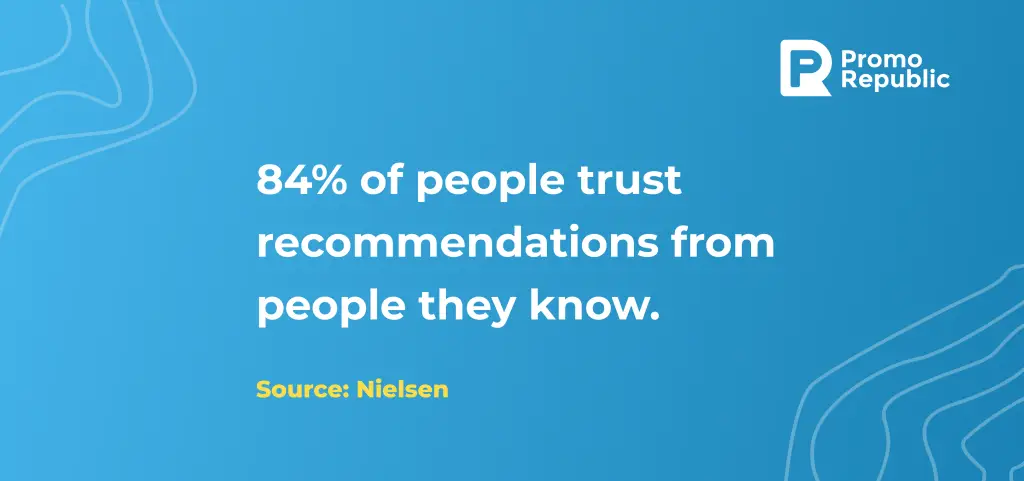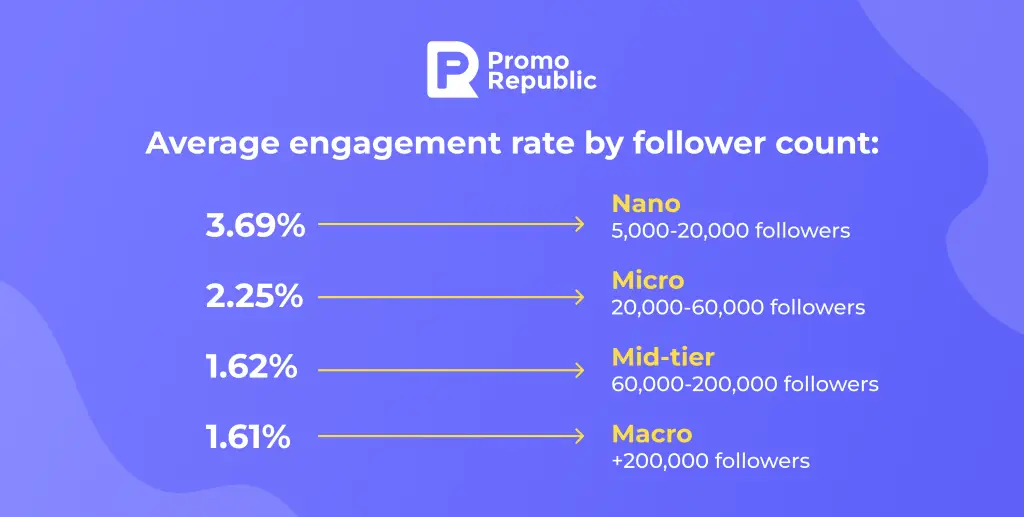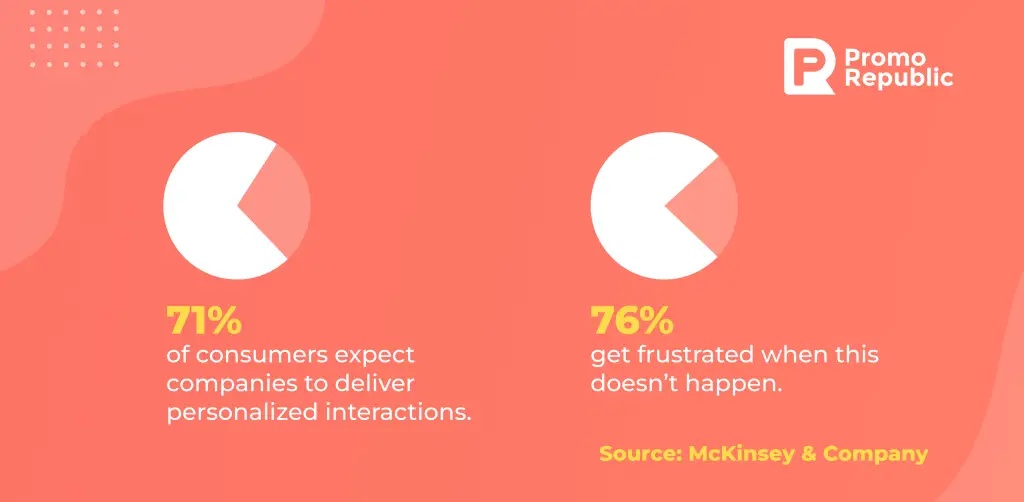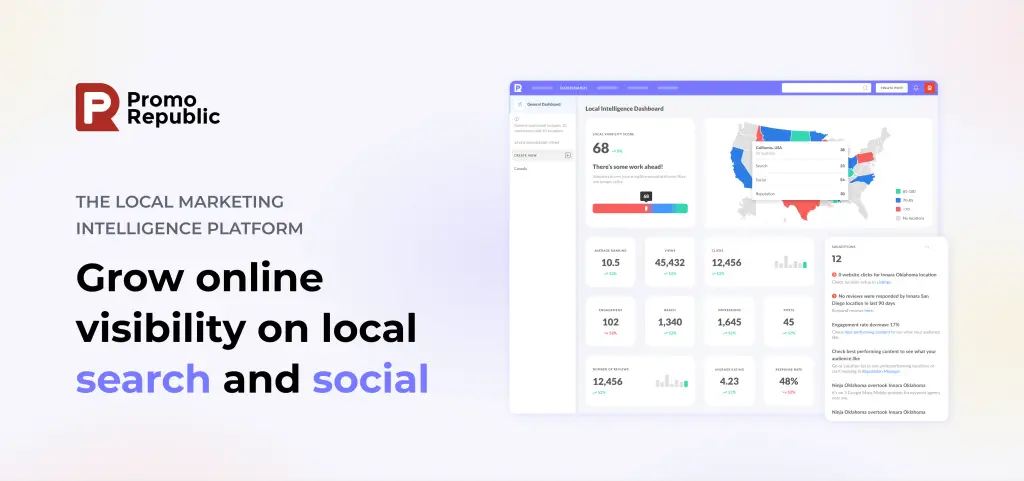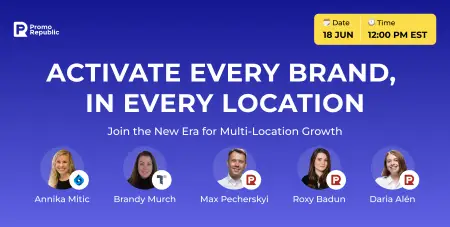4 Effective Local Marketing Strategies to Grow Your Fitness Franchise in 2023
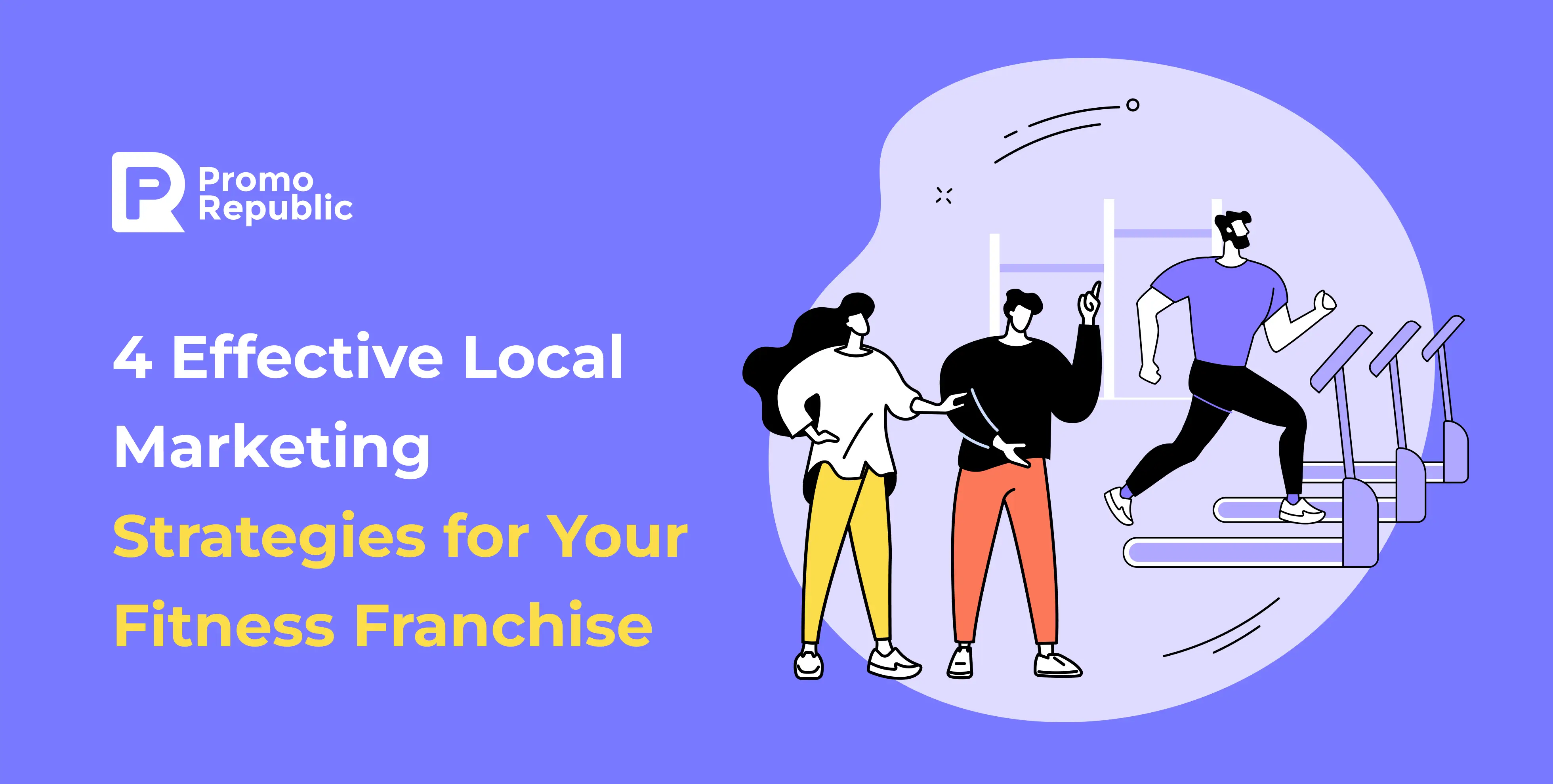
Content Marketing Manager
The latest McKinsey research shows that consumers care deeply about their health – and that their interest is growing. Globally, people plan to spend more on products and services that improve their wellbeing in the upcoming 2-3 years. Sounds like a great opportunity for the fitness industry.
To do effective marketing for your gym or fitness studio chain, you should understand that people’s attitude toward health has changed. It’s not about bikini body goals – people now think about health more holistically. In addition to physical well-being, their emotional, mental, and spiritual fitness has become a bigger priority.
Table of Contents::
- Post-Crisis Opportunities In The Fitness Industry
- What Is Fitness Marketing?
- Marketing Channels For Your Gym & Fitness Marketing
- 4 Tried And True Digital Fitness Marketing Strategies
- Innovative Gym and Fitness Marketing Tools
- The Bottom Line
Post-Crisis Opportunities In The Fitness Industry
People expect their experience to be better than before. The global wellness market is growing 5-10% annually. A rise in both consumer interest and purchasing power presents tremendous opportunities for companies. People are returning to fitness centers and renewing their memberships, expecting their post-pandemic experience to be more digital, more manageable, and more effective.
The fitness industry is getting more competitive. Since the pandemic made the majority of people across the globe prioritize their physical and mental health, the fitness market is booming. But at the same time it’s getting increasingly crowded, creating the need to be strategic.
The virtual component is still in demand. Lockdowns accelerated adoption of a hybrid model of workouts that more brick-and-mortar gyms plan to retain. For example, the luxury gym operator Equinox Group has been expanding its digital platform while other franchises have added live streams and on-demand online workouts to their offerings.
What Is Fitness Marketing?
When talking about fitness marketing, we should keep in mind that it’s still marketing that aims to get the right message to the right people at the right time. When these three elements are connected, you attract and retain more members.
To be purposeful with your fitness club’s online marketing campaigns, combine several digital channels.
Marketing Channels For Your Gym & Fitness Marketing
Good marketing comes from tried and tested solutions. Great marketing, however, comes from experimenting and thinking outside of the box. For a fitness studio this could mean, for example, adding TikTok as an extra social media channel to Facebook and Instagram or organizing impactful partner events.
- Social media marketing
According to Instagram, 90% of people follow a brand on that social network. But since there are over 200 million business accounts there, you’ll need to be creative with your fitness content. Typically people don’t want to be advertised to directly. But they’re open to engaging with brands on social media whether they’re looking for deals, educational content, or just want to learn more about your gym. Now you can understand why even personal trainers working in your studio must be active on social.
- Email marketing
Email fitness marketing allows you to promote your exclusive deals, conduct surveys, and share excellent health-related content. It’s also much more trackable from a marketing perspective than sending out a bunch of paper flyers. When you succeed in generating your first email leads, think about different fitness club marketing strategies to turn your hot leads into long-term customers.
- Paid advertising
Running paid ads on social media is one of the most accessible forms of advertising for franchisees. From creating the content, setting the budget, and targeting potential customers – they can do it all themselves. Age, gender, and zip code are enough to beat traditional advertising, but it doesn’t stop there. Your campaign’s performance can be tracked to indicate what is working, what needs a bit more effort, and what needs a revamp.
- Text message marketing
One of the most common types of marketing for gyms is sending texts about offers or promotions. This channel also works well for announcing classes, scheduling private trainings, greeting newbies, and generating reviews. By clearly segmenting your audience and providing a relevant message, you can achieve your membership goals and increase revenue faster.
In this short video, Jenell Riesner– Director of Marketing & Brand at iLoveKickboxing talks about the marketing channels her team will rely on in 2023.
4 Tried And True Digital Fitness Marketing Strategies
To win in the fitness market, companies should think critically about strategies, revising their delivery model and adjusting to customers’ new expectations driven by digitalization and a sense of community.
As most customers discover brands online, gyms and fitness centers should choose primarily digital or mixed strategies. In all cases, it starts here: to be competitive you have to play with the new rules of the game, namely those of fitness digital marketing. Check out these proven fitness digital marketing strategies to promote and sell your services effectively.
Marketing Strategy #1. Stand Out In Local Search
Studies show that since 2020, people have been working out more than ever. No matter whether you’re a gym, studio, or fitness club, you’ll probably want locals to find you. Since in most cases they discover local businesses online, you need a consistent presence on Google Search and Google Maps. Not convinced? Check out these stats:
- 46% of Google searches are local
- 80% of local searches result in conversions
- 50% of users visit a store within a day of conducting a local search.
As there’s always logic behind the order of search results, it’s wise to add a local SEO strategy to your fitness and gym marketing and grow your online findability. The higher your website or listing appears in organic search results, the more visibility, traffic, and visits you’re likely to get.
But showing up in search results is only winning half the battle. Customers want a seamless experience, so to get opt-in, be sure you’ve done your homework. What can you do upfront?
- Localize your website
Rule of thumb for multi-location fitness franchises is to have a separate landing page for every gym. Such pages should feature unique content related to this specific area. For example, you can target people in Bowery or Turtle Bay with location-specific keywords. If successful, you increase the likelihood of being displayed to people who conduct searches in those New York neighborhoods.
- Highlight your business on Google
The more information you supply to Google, the more ranking factors it can consider – and the more likely it is to surface your gym in local search results and map packs.
As you enter this information, Google gives you a score for how complete your business listing is — try your best to get this up to 100%.
Don’t fail to add images. Rich media that supports your listing shows the atmosphere, establishes trust, and has the power to increase your visibility too. Businesses with at least one photo in their profile receive 42% more requests for directions and 35% more clicks to websites than those without photos.
- Respond proactively to online reviews
People will choose fitness studios with at least 4 star ratings. As you know, these stars are given by real people who are happy or disappointed with your service. The truth is, unhappy customers are more active in writing their feedback.
So your goal as a business is to encourage people to share their positive experiences and to respond to customer reviews to prevent negative feedback from floating around unanswered. A steady flow of reviews signals to Google that your gym is active, meaning trustworthy.
Watch Shana Krisan, a CMO at Goldfish Swimming School, talk about the importance of recommendations.
Marketing Strategy #2. Start a Referral Program
Local marketing for fitness centers is all about connecting with your community. With a good referral program, you can quickly turn your top customers into authentic brand ambassadors who act as lead generators. The most effective referrals, naturally, are endorsements from friends or colleagues your prospects know and trust.
But for sheer reach and volume, ensure you have a page on your website with detailed information about discounts, bonuses, and coupons you give in return for referral of new customers.What’s more, leading marketers see nothing wrong with somebody walking around in your facilities asking people how they’re doing and then asking for a referral after hearing positive feedback.
The essential part of your referral marketing strategy is making the process easy for your members: give them a card with a QR code for example. It’s also practical to segment the audience since parents love to hear from other parents, entrepreneurs from other entrepreneurs, for example. For instance, fit20 franchise, which is oriented toward busy people, sees that 40% of its growth comes from word of mouth.
Merchandise also can have the power of wearable referral. Ilovekickboxing issues bracelets and Goldfish Swimming School gives away lunch boxes and other useful swag. They see material things as a great way to start small talk.
Marketing Strategy #3. Work With Micro-Influencers
The value of influencer marketing lies in the fact that more than 60% of consumers report that they will consider a brand or product posted by their favorite influencer. This number is 1.6 times bigger than the 38% who trust branded social media content.
While the traditional celebrity-driven model is still a lot easier for bigger franchises because of a single touchpoint, micro-influencers make fitness club marketing resonate with local audiences better and generate a more targeted following.
Why micro?
Typically boasting 10,000 to 50,000 followers, micro-influencers post within content niches such as fashion, travel, or fitness. Small but mighty, they’re becoming integral players in franchising, specifically when it comes to local marketing. People trust them more than celebrities or high-profile influencers because of a more sincere attitude.
How to find local influencers for your brand?
First, сonsider your own following. There’s a good chance you’ll find someone nearby who has previously engaged with your content. The second option is to use influencer discovery tools like Heepsy or Aspire that can match you with influencers for your fitness niche. Or, you can choose to skip the fees and search for influencers organically. On Instagram, for example, you can explore geotags and hashtags to find your fans.
You can work with micro-influencers in plenty of creative ways to bolster local awareness and drive sales:
- offer a free product, service, class, or visit to your gym
- host a giveaway
- invite them to exclusive events.
Marketing Strategy #4. Personalize Your Members’ Experience
Roughly 75% of consumers tried a new shopping behavior during lockdowns, and more than 80% of those intend to stick to new behaviors. At the forefront of that shift was the desire for personalized experiences among consumers – now, brands just need to get it right.
For example, when your members open an app, they expect to receive personalized offers and notifications based on shared data and their behavior. If your fitness club marketing is meant to meet customers’ needs (at least it should be), think about how you can customize training plans, segment video workouts, and track members’ performance to motivate them in the long run.
A successful strategy starts with a foundation of trust and authentic, transparent brand communication. Next – try to figure out what your members want from their experience with you. Start with these steps:
- Ask people what matters to them. A great place to start is to have members fill out a new-joiner survey so you can get to know them a little better. Allow long-time members to provide feedback or ask them for advice whenever possible.
- Track their progress. Without seeing progress, it’s easy for people to lose sight of why they joined. To keep them aware of the bigger picture, Orangetheory, for example, provides live performance tracking. But you don’t necessarily need expensive tech. Keep it simple with group fitness marketing, before-and-after pictures, or even monthly assessments.
- Make members accountable. So we know that each member has different interests and preferences. But it’s your member data that can reveal how they differ. You can see what time of day suits them, and what kind of workouts they like best. You can use this information to target members with helpful, personalized content that will resonate with them.
- Build a community. Community is about bringing your members together. After years of individual home exercise, people are now turning to group fitness. So by making your gym a place to achieve goals collectively, you push your members’ limits, which results in progress.
In this video Walter Vendel, CEO of fit20 describes how they turn their customers into brand advocates.
Innovative Gym and Fitness Marketing Tools
Managing clients, staff, payments, or tracking your club’s online visibility may be overwhelming, especially for small teams. But running your fitness club shouldn’t be an uphill battle. And when you’re using the right marketing tools, they save you time, improve your promotional efforts, and generate better results. Check out our list of the top apps for the fitness market today:
- PromoRepublic – the intelligent local marketing platform helping gyms and fitness clubs grow online visibility of their locations on local search and social. Its intelligent dashboards and tools detect insights & make suggestions with the first-of-its-kind Intelligence Engine and fuel brand growth at scale.
- GymMaster – easy-to-use gym system for membership tracking and online bookings.
- ConnectTeam – all-in-one software for human resource management that allows scheduling classes and shifts for your gym.
- Mindbody – a scalable CRM system for staff and member management with a pack of tools for running marketing, payments, client experience, and more.
- Glofox – all-in-one management platform helping fitness studios and gyms control customer acquisition, billing, and retention.
The Bottom Line
2023 will be a peak year for fitness marketers as people are prioritizing their health and plan to spend more on wellness.
The pandemic triggered a digital revolution that reinvented the way that people work out, with “anytime, anywhere” as a common slogan repeated across the fitness industry.
To reach and mingle with their health-conscious customers where they are, fitness marketers use a mix of channels and strategies. Mainly they’re focused on generating leads, acquiring traffic, building their reputations, and retaining members.
To convince prospects, fitness studios juggle local SEO, referral programs, partnerships with influencers, and a personalized approach. But these strategies aren’t complete without marketing tools that help gyms track their visibility and their customers’ interactions, highlighting opportunities to grow their franchise.
PromoRepublic, powered by its Intelligence Engine, is a local marketing intelligence platform that can empower your franchisees and locations to grow with its intelligent dashboards and tools. Get suggestions to grow your locations’ performance in local search and social.
Schedule your audit now.

